By Falk B. (Schwerte, Deutchland) on 10 Apr. 2024 :
By CAN G. (LLERS, España) on 02 Apr. 2024 :
By Luigi D. (Ascoli Piceno, Italia) on 27 March 2024 :
By Maxime D. (Guidel, France) on 11 March 2024 :
By Kai K. (Eislingen, Deutchland) on 31 Jan. 2024 :
What is a Bulk Bag - FIBC - Definition, Uses & Models
Published : 12/22/2019 10:49:28
Categories : Bulk Bag & Waste bags

Definition of the Bulk Bag
A Bulk Bag or FIBC is a large bulk storage bag. It is made of lightweight flexible canvas, which optimizes shipping costs when empty compared to other more rigid, heavy and bulky containers (such as wood, cardboard, plastic or metal).
Bulk Bags are widely used all over the world for their practicality, economy and also for a very large number of applications.
They are mainly made of virgin polypropylene, a thermoplastic polymer that can be totally recycled in the appropriate dies. Bank notes are even produced from this material (the case of Australia, Israel, Canada and Mexico) and are popularly used for food packaging because of its properties and compliance.
The main types resulting from the manufacturing methods
There are mainly 3 types
The classic Bulk Bag otherwise known as U + 2 Panel
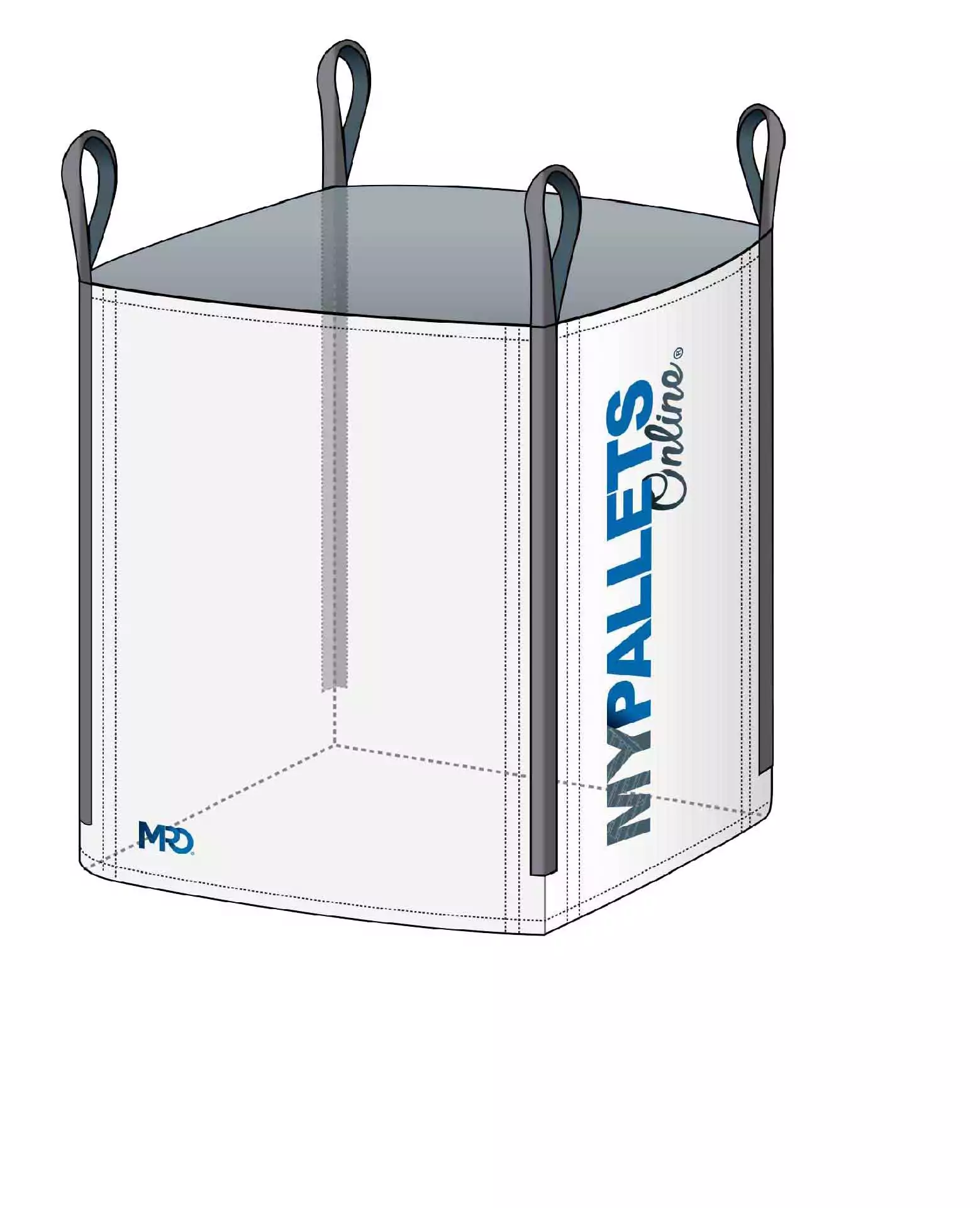
The Bulk Bag U +2 Panel is the most manufactured in the world. Its construction is composed of a single canvas, forming a U, comprising 1 side, the bottom and the other opposite side. The two missing sides and finalizing the body are sewn on both sides of the U. The bag thus finalized includes 4 vertical seams. 4 lifting points (straps) are sewn on the 4 corners whose dimensions and properties will allow the intended load support.
The Circular Bulk Bag
It is mainly composed of 2 parts, the bottom and the body. We can't really talk about the side for this Bag because the body is made up of a single piece, a single canvas with no vertical seams in the corners. The "square" bottom, which is larger than the diameter of the body, is sewn onto it, thus obtaining a cylindrical bulk bag.
The 4 straps are sewn directly onto the canvas and on which a reinforcement insert has been previously placed. They are sewn "on horseback" which gives them a better rigidity and remains relatively straight allowing the carriage forks to be inserted without having to get off the lift and manual insertion action.
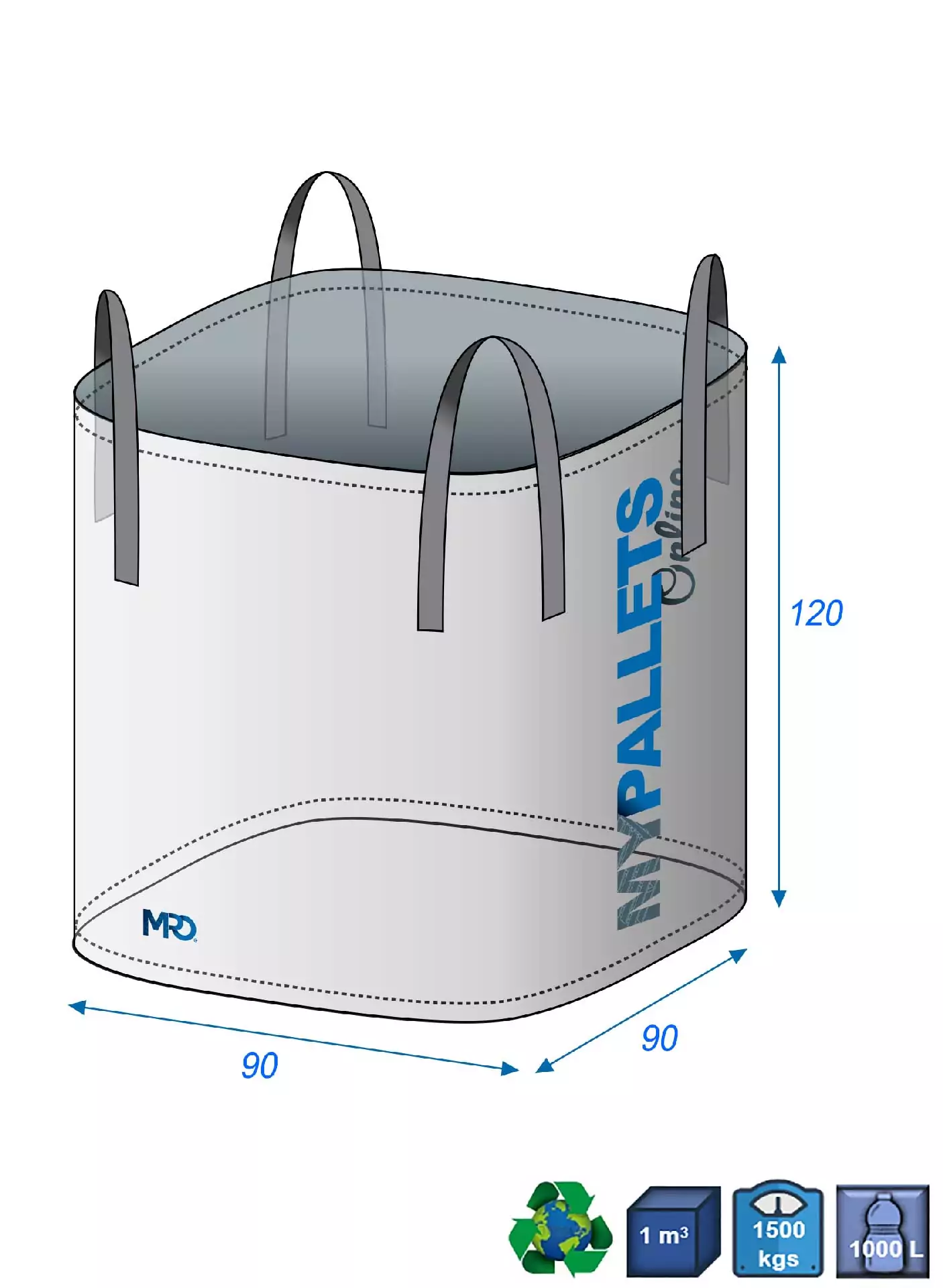
The QBag
The main advantage of the Big Bag can also be its main disadvantage..., namely the flexibility of its canvas. The bags may tend to make the “belly” after filling, widening and sagging its base because of the weight.
That's why the Qbag was designed. Reinforcements are added to stiffen the inner sides of the filler. Several internal reinforcement solutions can be chosen depending on the level of rigidity and cost.
There are also other models called for example plate bags or container bags. In these cases, it is a large flexible bulk container (FIBC) of regulated use for the transport and containment of asbestos (ADR transport compliance). We will come back to these particularities in an article specifically related to the regulations on the transport and containment of hazardous goods as well as adapted bulk bags.
What are the different filling (loading) systems ?
There are mainly three (3) types.
The Total Opening
The bag is fully open at the top. This is the most classic case and is widely used for building materials (sand, gravel, etc.) and also for garden waste or all kinds of waste. It is also the cheapest.
The filling & closing skirt
It is a square piece of canvas above the filling body that allows:
- to direct the loading inside during filling. The skirt can remain relatively straight on all 4 sides
- to close the bag completely after filling it on top.
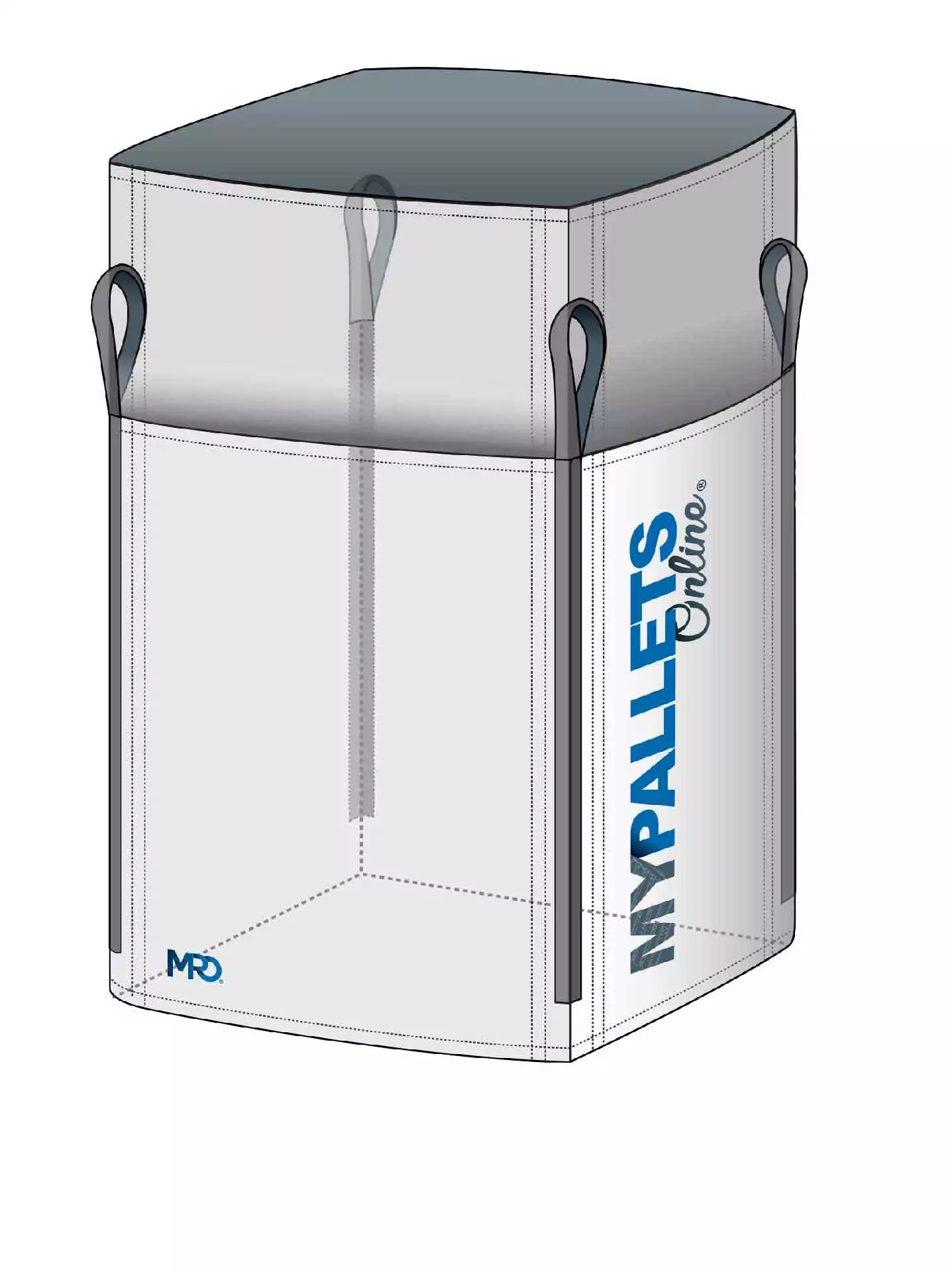
The filling spout (chute)
- it is a canvas tube used to insert the filling channel or sleeve (pipe) into it. No overflow during the filling operation. 2 links sewn on the trunking allow to be used as a clamping device around the filling tube
- At the end of the filling operation, the spout is closed on top.
The diameter and length of the trunking varies according to the size of the bag. Or more specifically for a custom-made production (which we can design with you from A to Z).
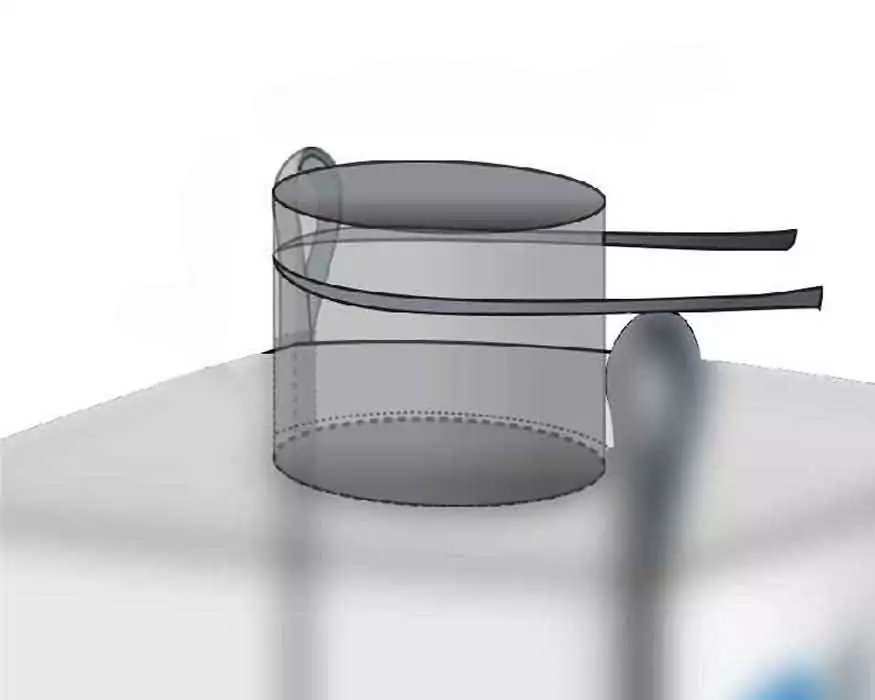
What are the different bottom and discharge systems ?
The closed flat bottom
The bottom of the bulk bag that supports the load is completely closed.
To empty it, it must either be turned over (with turning straps) or extracted from above.
This "rubble bag" construction is widely used for the transport of building materials, gravel, sand, etc. where professionals and craftsmen do the extraction by shovel.
The discharge spout (chute)
As seen earlier in our article, for the discharge spout is its counterpart below the Bulk Bag.
- It is a generally cylindrical tube of canvas that allows the contents to be emptied by reducing and controlling the speed of the flow.
- The chute can be closed while there is still merchandise in the bag.
The length and diameter can be adapted according to your needs in the case of a custom-made production that we offer.
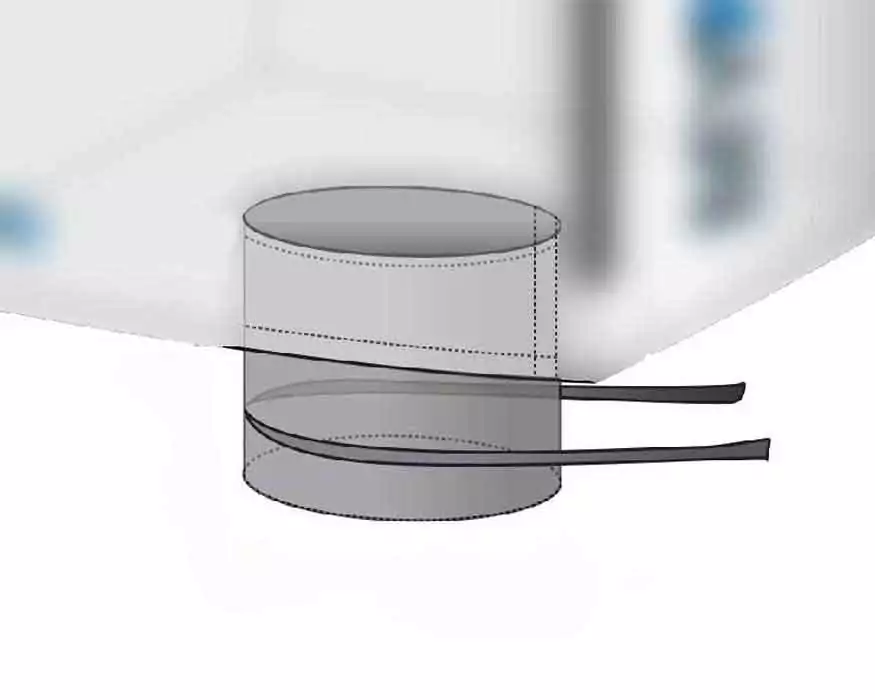
The fully opening bottom
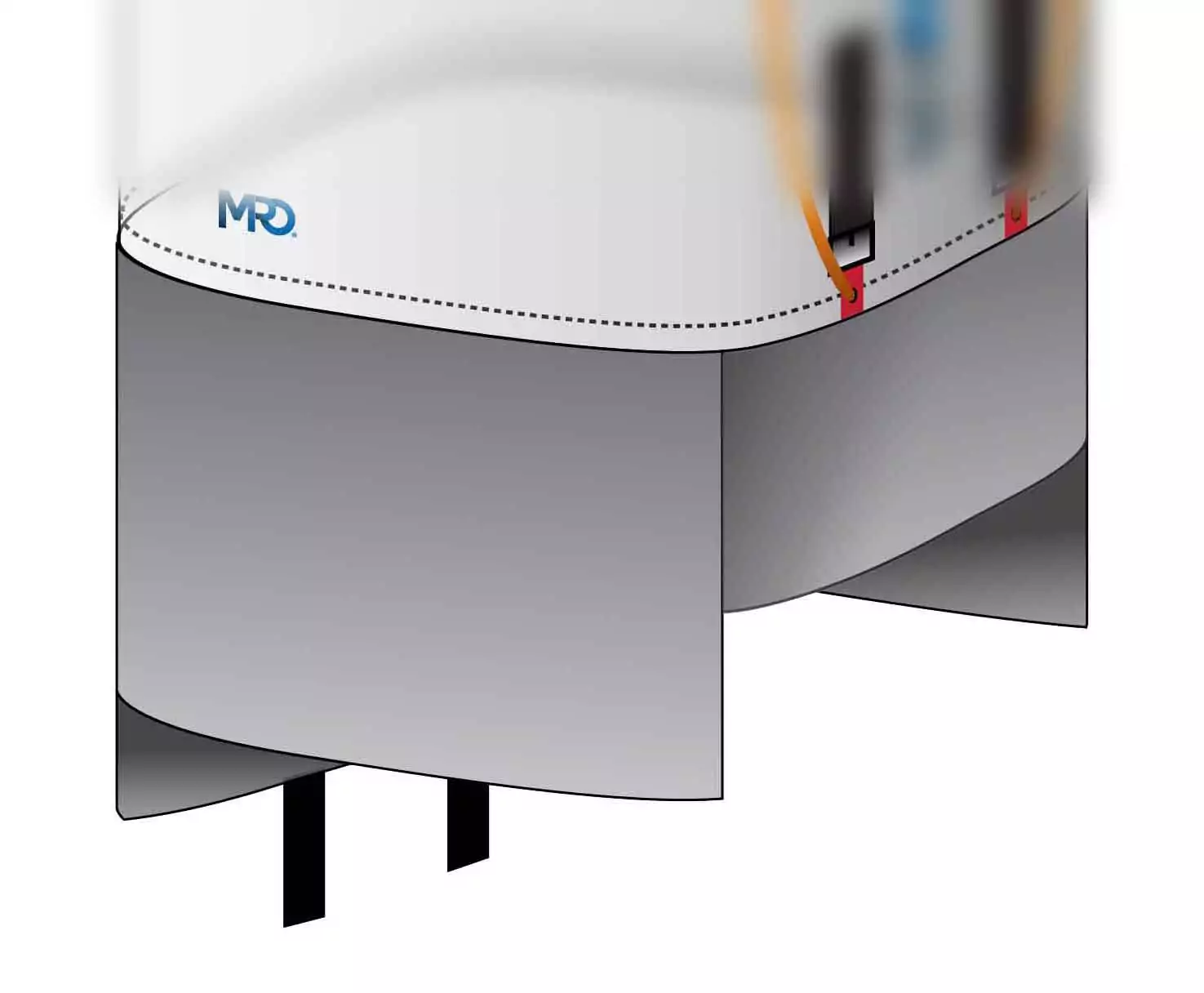
This design is one of our best-sellers, as its practicality saves time for building professionals and privates.
The fully open bottom is secured by mechanical links.
How to empty your load ? It is very simple, disengage the safety links and by gravity the bottom automatically opens, emptying all the contents on the ground or in the intended receptacle (box, hopper, concrete mixer, etc.).
This model is available in a reusable version SF 6:1. Saving time and money !
The different types of Loops (straps)
The classic loops
4 lifting loops (lifting and handling) are sewn into each corner of the Bulk Bag. Each strap consists of a strip of canvas, reinforced according to the load resistance characteristics.
The tape is folded back, on itself. It is then sewn by creating a double thickness in the corners of the bag. The total length of the seam tape also depends on the expected strength conditions.
Bulk Bags with classic loops can be handled with slings, elevator forks subject to their conformity.
Straight loops
Unlike conventional straps, each side (end) of the strap is sewn on both sides of the Bulk Bag. In principle, a piece of canvas reinforcement is added at the seam location doubling the thickness to increase strength and load resistance.
The main advantage of this type of loop is its greater rigidity. This rigidity keeps it relatively straight and facilitates forklift picking without the need for manual insertion action.
Straight straps are used on Circular bulk Bag models but can also be chosen for their practicality for U+2 Panel constructions.
The "tunnel" loops
The "Tunnel" loops are in fact 2 specific lifting points for handling equipment equipped with 2 forks placed on either side of the top of the bag.
They are made of a canvas the width of the sewn Bag forming a loop.
This type of lifting point is quite restrictive since you will not be able to lift or move your load if you do not have machines with 2 forks with variable spacing.
For quite specific cases, we can produce bulk bags equipped with "tunnel" loops and 4 classic ones. This double equipment can allow a restriction of handling conditions in your factory or warehouse (safety policy for example) and thus leave your customers the choice of both possibilities.
The 1 and 2 lifting points
Classically used in sectors related to agriculture, in particular for fertilizers, ammonitrate and fertilizer by-products, Bulk Bags with 1 point and 2 points are mainly used for automatic filling stations and bagging machines. The reinforced 1-point or 2-point strap allows the Bulk Bag to be suspended.
The turning loops
They are additional to the lifting loops. These are two loops sewn on 2 corners at the bottom of the bag. Hanging on a sling and other lifting hook, the lifting movement will tip and turn the Bulk Bag over, emptying it of its contents. The turning straps are only found on bulk bags with a closed flat bottom.
What are the uses and applications ?
As a preamble, it must be said that the uses and applications are very wide. That it is even impossible to draw up an exhaustive list.
In some cases, they are found for uses that we had not imagined. For example (it's real life...), use a bag with an internal bag to fill it with water and be used as a ballast weight... and it works !
On our site, we have voluntarily classified Bulk Bags, based on our experience, as areas of preferred use.
This is why, in order to simplify your search, we have created 8 business areas in the main category :
- For construction site and rubble waste
- For the agricultural world and farmers
- For building materials
- Agri-food and food by-products
- The recycling sector
- Regulated big bags (asbestos and hazardous products)
- For domestic and gardening activities
- For the wood and related products sector
But it must also be recognized that this is a simple recommendation for use. A classification, however accurate and precise it may be, cannot (and this is regrettable) understand all the cases of use.
To illustrate our point, we can take, for example, a classic big bag with a resistance of one (1) ton which can just as easily be used to store sand, paper or rockwool or recycling granules (as long as its dimensions and design suit its user best).
Are Bulk Bags reusable ?
We must be very clear in our article, Bulk Bags and rubble bags are tested to be certified according to their safety application.
They are certified according to their resistance coefficient. For a Bulk Bag classified 5:1, certification will be obtained if the bag resists 5 times its safety resistance.
For example, a 1000 kg rubble bag will obtain certification if it resists testing at 5,000 kg.
There are 3 classifications / certifications
5: 1 = Single use
6: 1 = reusable
8: 1 = reusable for heavy use and hoisting
The label, which is mandatory and sewn onto each bulk bag, contains, in addition to the operating and safety instructions, the SF X: X certification classification.
The reuse of the Big Bag is the responsibility of the user. It is true that if you use it to fill it with bulky and lightweight products, the bag will not be subjected to high forces.
Are used Bulk Bags compliant ?
There is a second-hand and reuse market. However, as mentioned in the previous paragraph, Bags are regulated and certified according to their resistance capacity (preferably also tested in an independent laboratory).
If the Bulk Bag is classified SF 5:1, therefore for single use, it should not be resold for another use at the risk of having lost its intrinsic qualities of resistance from its first use.
If the Bulk Bag is classified as 6:1 or 8:1, the question is the number of previous uses?
Indeed, the FIBC is said to be reusable YES, but not to infinity.
It is commonly agreed that a 6:1 bag can be reused between 5 and 8 times. It is the user's responsibility to systematically check the quality of the bag before filling.
So if you buy a second-hand bag classified 6:1, are you aware of the number of previous uses? Certainly NO and no one can guarantee it.
Besides, do you know what the Bulk Bag contained previously? Is this compatible with your own use?
Many questions arise regarding the reuse of Big Bags and their compliance.
This is why, as we can never guarantee the history and traceability of use we do not offer any!
our article has answered to your questions ?
Feel free to leave us your appreciation and comments.
(updated 01-04-2020)

Jean Baptiste
10/12/2021 17:37:36
Merci pour cet article intéressant
Stefania (Responsabile Qualità):
09/04/2020 09:55:17
Le big bags sono prodotte in Polipropilene (PP).
Pamela Ventura
09/04/2020 09:44:20
Vorrei sapere con quale materiale con cui è realizzata la tela, non mi sembra che ci siano delle etichette indicanti il materiale all'interno dei sacchi. Grazie